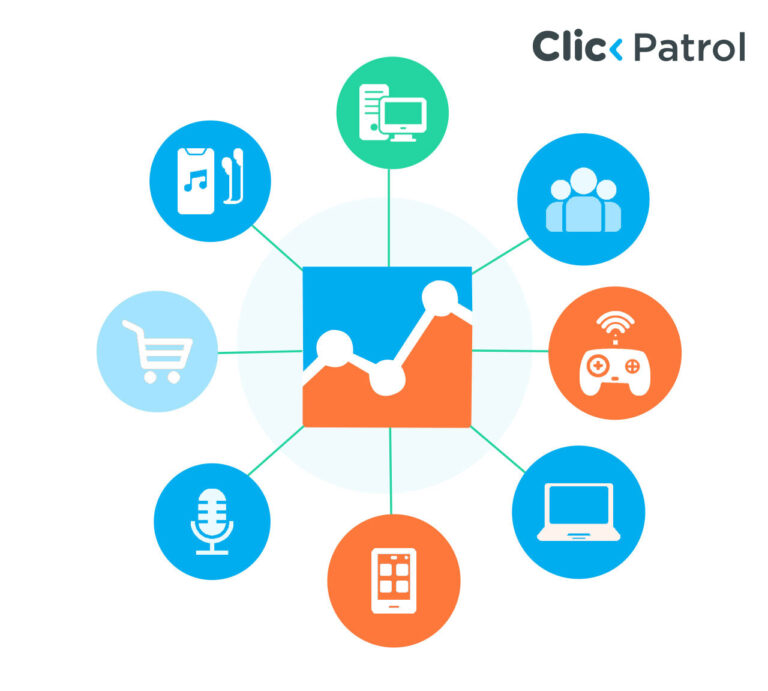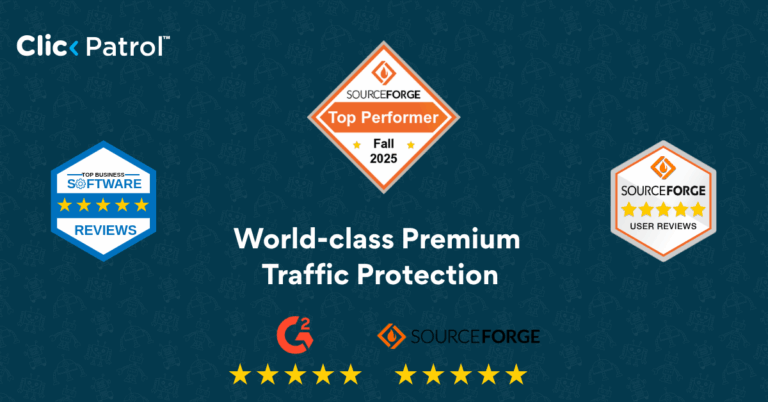
Good Bots Vs Bad Bots: Differences and Similarities
Abisola Tanzako | Aug 21, 2024

Table of Contents
- What is a bot?
- Good bots vs Bad bots
- What are good bots?
- What are bad bots?
- Types of bad bot attacks
- 2. Web scraping
- How do you stop bots on your website?
- 1. Use Robots.txt
- 2. Remove bots from Google Analytics
- 3. Use CAPTCHAs
- 4. Implement a web application firewall (WAF)
- 5. Include multi-factor authentication (MFA)
- 6. Make use of a bot protection solution
- Know the difference between Bots
- FAQs
Good bots vs bad bots; do you need to choose?
Bots play a dual role, embodying both beneficial and harmful capabilities. At their core, bots are software designed to automate tasks, performing operations with remarkable speed and efficiency. However, a bot’s impact is dictated by its intent and functionality. Good bots enhance our online experience by indexing web pages, curating social media content, or providing customer support.
Conversely, bad bots pose a significant threat, engaging in activities such as data theft, spreading spam, or disrupting services. The distinctions between good and bad bots will be covered in this article. We will also review the many bot assaults and how to defend yourself against malicious bots while enabling good bots to carry out their essential tasks.
What is a bot?
A bot is a software that swiftly and efficiently completes tasks independently. It is a tool that can be applied to both positive and negative purposes. Good bots are essential to our everyday internet experiences, but you must take the necessary precautions to avoid bad bots causing significant harm to your business.
Good bots vs Bad bots
The simplest method to categorize bots is based on their purpose: were they designed to be beneficial or detrimental? This method is effective because bots’ complexity varies so much that it quickly outgrows other classifications. Bots can be as simple as a few lines of code to automate a repetitive operation or as complex as numerous scripts working together to mimic human behavior.
What are good bots?
A good bot serves your business or website users through a beneficial task. It is not built with malice in mind. It rarely impairs or worsens the experience that users have in the locations it crawls. A good bot builder will typically create a bot that complies with webmaster guidelines, which specify the frequency at which website bots should crawl and index a website.
These guidelines are usually defined in the robots.txt file on the website, which a good bot builder will program to locate, read, and obey before proceeding with any other tasks. Examples of good bots include;
- Search engine bots, including the Baiduspider, YandexBot, Bingbot, and Googlebot, are a few examples of good bots. These bots trawl the vast internet for content that will enhance search engine rankings.
- Social network bots, such as Pinterest Crawler and Facebook Crawler, crawl websites posted on social media networks to improve suggestions, combat spam, create a safer online environment, and more.
- Aggregator bots, like the Feedly Fetcher, crawl websites’ RSS or Atom feeds to create automatically generated feeds based on user choices.
- Marketing bots, like AhrefsBot and SEMrushBot, are included in SEO and content marketing software and search websites for backlinks, organic and sponsored keywords, visitor volume, and other metrics.
- Website monitoring bots include Uptimebot, PRTG Network Monitor, WordPress pingbacks, and others. These bots ping your website to determine its functionality and whether it is down.
- Voice-activated bots, like Siri’s Applebot and Crawler on Alexa, are similar to search engine bots in that they crawl the web to provide precise responses to queries your users pose to their voice assistants.
- Copyright bots: These are automated programs that search platforms or websites for content that might violate copyright laws. They can be run by any individual or organization that owns copyrighted material and can find duplicate text, music, images, or even videos.
- Commercial bots are automated programs that search the internet for information on behalf of commercial entities. They can be run by market research firms that track news reports or customer reviews, ad networks that optimize the locations where they display ads, or search engine optimization firms that crawl their clients’ websites.
- Chatbots: Chatbots utilize pre-programmed responses to mimic human communication. Specific chatbots possess sufficient complexity to engage in extended dialogues.
As you can see, many useful bots will be interested in crawling your website. This does not imply that everyone should let them. Reputable bots also consume bandwidth. There are instances when they need help to crawl your website. For example, Baiduspider and YandexBot should not crawl your website if you do not cater to Chinese or Russian audiences.
What are bad bots?
A bad bot is designed to carry out an action that may harm your business or users of your website. It will either directly or indirectly degrade the user experience of the locations it crawls because it was created with malicious intent. Those engaged in illicit activities, such as fraudsters, cybercriminals, or anyone else, typically create bad bots.
Your rivals might also use bad bots to harm you. Bad bots either do not read the robots.txt file or disobey its guidelines. Regrettably, bad bots have advanced in sophistication. In the past, they were just essential crawlers that were bots. Nowadays, increasing numbers of bots imitate human behavior and deceive people using programs like Chrome Headless, Playwright, and Puppeteer, which can only be detected by the best bot management solutions.
Types of bad bot attacks
1. DDoS attacks
Distributed Denial of Service is also known as DDoS. In Layer 7 DDoS assaults, bad bots target particular application-layer processes, overloading those features or functions until your websites, apps, or APIs either break completely or drastically slow down. According to Neustar’s 2017 estimate, these attacks harm an organization’s income by an average of $2.5 million.
2. Web scraping
Without your consent, Web Scraper will take prices, product descriptions, and other valuable content from your website and utilize it elsewhere. Rivals might use these bots to repurpose your material or undercut your rates swiftly. Occasionally, search engines will also rank highly for their results, hurting your SEO rankings and stealing customers who could have been yours.
3. Click fraud
Click or ad fraud means creating fake clicks, page views, and impressions to charge advertisers money without producing any sales. Due to the massive volume of bad bots, businesses lose billions of dollars annually. Publishers often suffer from this since they wish to keep positive working ties with their sponsors. Click fraud has the potential to harm their reputation severely.
4. Accounts takeover (ATO)
When malicious bots get access to user accounts, they can access credit cards, bank accounts, and personal information. This is known as an account takeover. They accomplish this by gathering data from data breaches and using credential cracking and credential stuffing attack techniques to brute-force or stuff usernames and passwords on a large scale. Once they get access, they can use someone else’s credit card fraudulently or steal their identity.
5. Spam
Malicious bots may invade your website and leave nasty comments anywhere, promoting illegal products and services or spreading malware. They scrape your site or email addresses to send unsolicited emails to email addresses. In March 2020, Statista reported 53.95% of all email traffic as spam. Spam can harm your reputation and deplete your resources, even though it’s usually more of a nuisance than a real threat.
How do you stop bots on your website?
1. Use Robots.txt
The first step in effective bot management is correctly configuring the robots.txt file on a website. A text file called robots.txt is stored on a web server and contains instructions for any bot visiting a hosted website or application. These guidelines specify which pages the bots may and may not crawl, which links they may and may not follow, and other guidelines for acceptable bot conduct.
Good bots will abide by these guidelines. Good bots are designed to search for the robots.txt file and adhere to the regulations before doing anything else, even though the file cannot enforce these guidelines. However, bad bots will frequently either ignore the robots.txt file or scan it to determine what content a website is attempting to prevent bots from accessing, after which they can access that content. Therefore, controlling bots requires a more proactive strategy than just putting the guidelines for bot behavior in the robots.txt file.
2. Remove bots from Google Analytics
Bots can create the impression that your website receives a lot more traffic than it does, making it difficult to use Google Analytics to make data-driven decisions. Google Analytics provides an option in the Admin View settings to remove known malicious bots from your data. Google Analytics will notice new, sophisticated, and lesser-known bots.
These bots have the occasional ability to dominate your website’s traffic. Bots can frequently account for as much as 70% of all traffic. Even if Google Analytics were flawless in distinguishing between a bot and a human visitor, it would still do nothing to stop the malicious bot from attempting to cause chaos for your APIs, apps, and web pages.
3. Use CAPTCHAs
In the past, captchas offered a reassuringly effective defense against bots. However, in recent years, bots have developed strategies to get around CAPTCHAs, making them difficult for humans to complete and simple for bots to do so. Today’s captchas kill your conversions and make the internet less accessible in exchange for virtually little protection when, in the past, they were an inconvenience that had some use.
4. Implement a web application firewall (WAF)
An effective Web Application Firewall can stop known attacks using IP addresses and user agents known to be malicious. However, bots now cycle through hundreds, if not thousands, of reliable residential IP addresses. The latest bot detection and prevention advancements have rendered WAFs and their IP-centric rules ineffective.
5. Include multi-factor authentication (MFA)
Using multi-factor authentication on your login pages is an excellent way to stop malicious bots. No matter how much you stress the value of MFA in your user interface, you cannot compel users to use it. Unfortunately, many people refuse to use it since they think it creates needless friction.
6. Make use of a bot protection solution
In the end, a specialized bot management solution such as ClickPatrol is required. Top independent research firms believe that investing in bot management will benefit businesses as it becomes more sophisticated. Bot management software is now a must-have cybersecurity tool to safeguard your websites, applications, and APIs.
Know the difference between Bots
Distinguishing between good and bad bots is essential to understanding their influence on our digital space. Good bots are intentionally created to improve user experience, optimize workflows, and provide useful services. They function transparently benefiting users and businesses.
On the other hand, bad bots hinder this advancement by participating in malicious activities like disseminating false information, launching cyberattacks, or taking advantage of weaknesses. These negative consequences may threaten security, privacy, and trust.
FAQs
Q.1 What is a blocklist?
A blocklist lists IP addresses, user agents, or other online identification indications prohibited from accessing a server, network, or website. This is slightly different than utilizing an allowlist: an allowlisting strategy only allows specified bots through and prevents all others.
Q.2 What are good bots, and how do they impact search engine rankings?
Good bots are computer programs created for beneficial online tasks, like content curation, website optimization, and indexing websites for search engines. They influence search engine rankings by aiding in the indexation of websites and enabling the display of website content in search results, improving websites’ exposure and traffic.
Q.3 How does harmful traffic relate to bad bot traffic, and why is it vital to restrict it?
Malicious bot traffic must be blocked to protect your online reputation from threats. Various destructive actions, including ad fraud, DDoS assaults, and data theft, can be classified as malicious traffic. By blocking these malicious bots, you can be sure that your website is only accessed by reputable traffic from actual people and good bots like search engine crawlers.
Q.4 What techniques may be used to recognize and efficiently detect bad bots?
Website owners can employ bot detection tools that examine user agents, track IP addresses, and analyze online traffic trends to discover and detect malicious bots. Behavioral analysis and machine learning are two components of a bot management strategy that can be used to identify and distinguish between malicious bots and real users.





